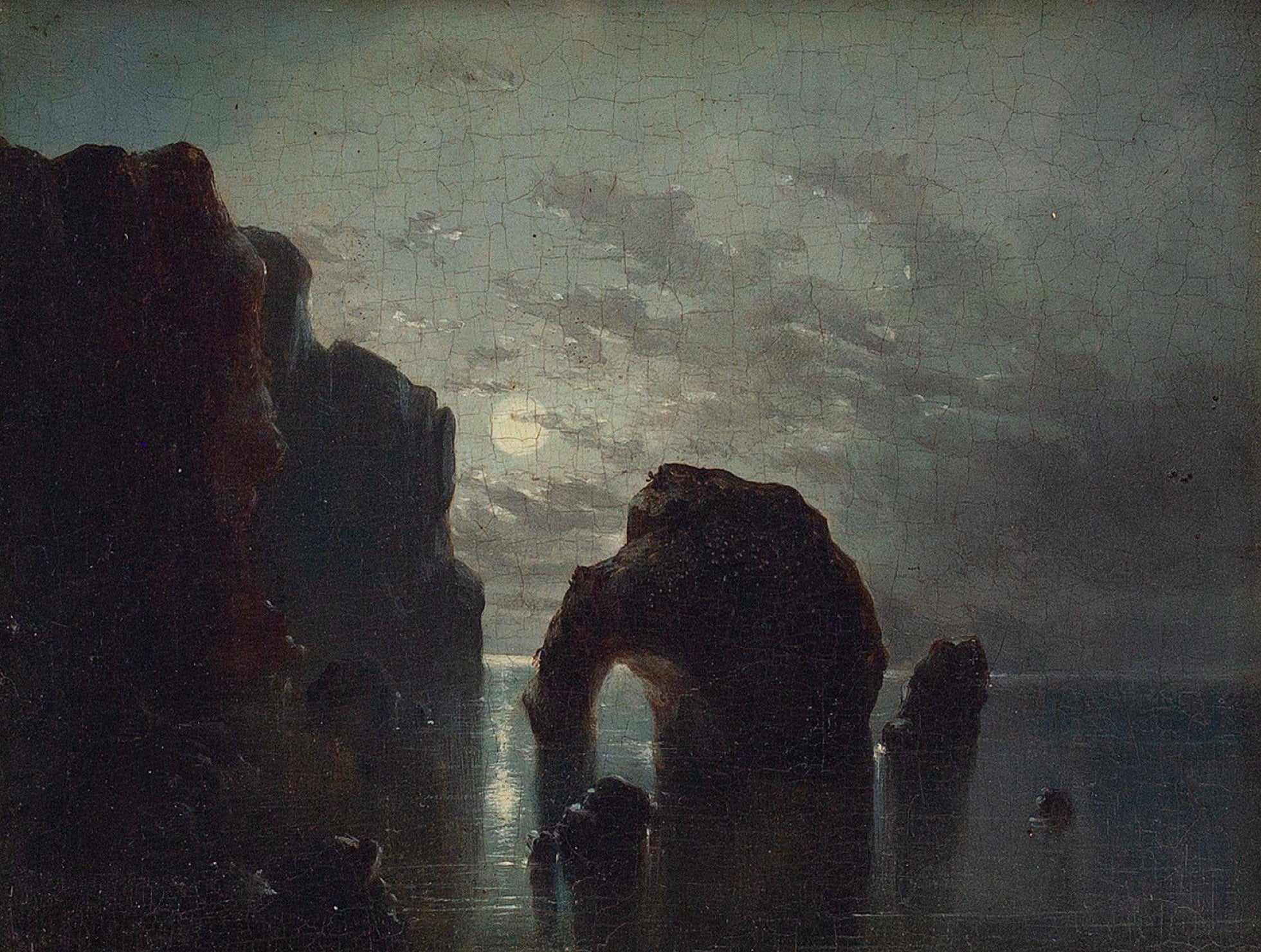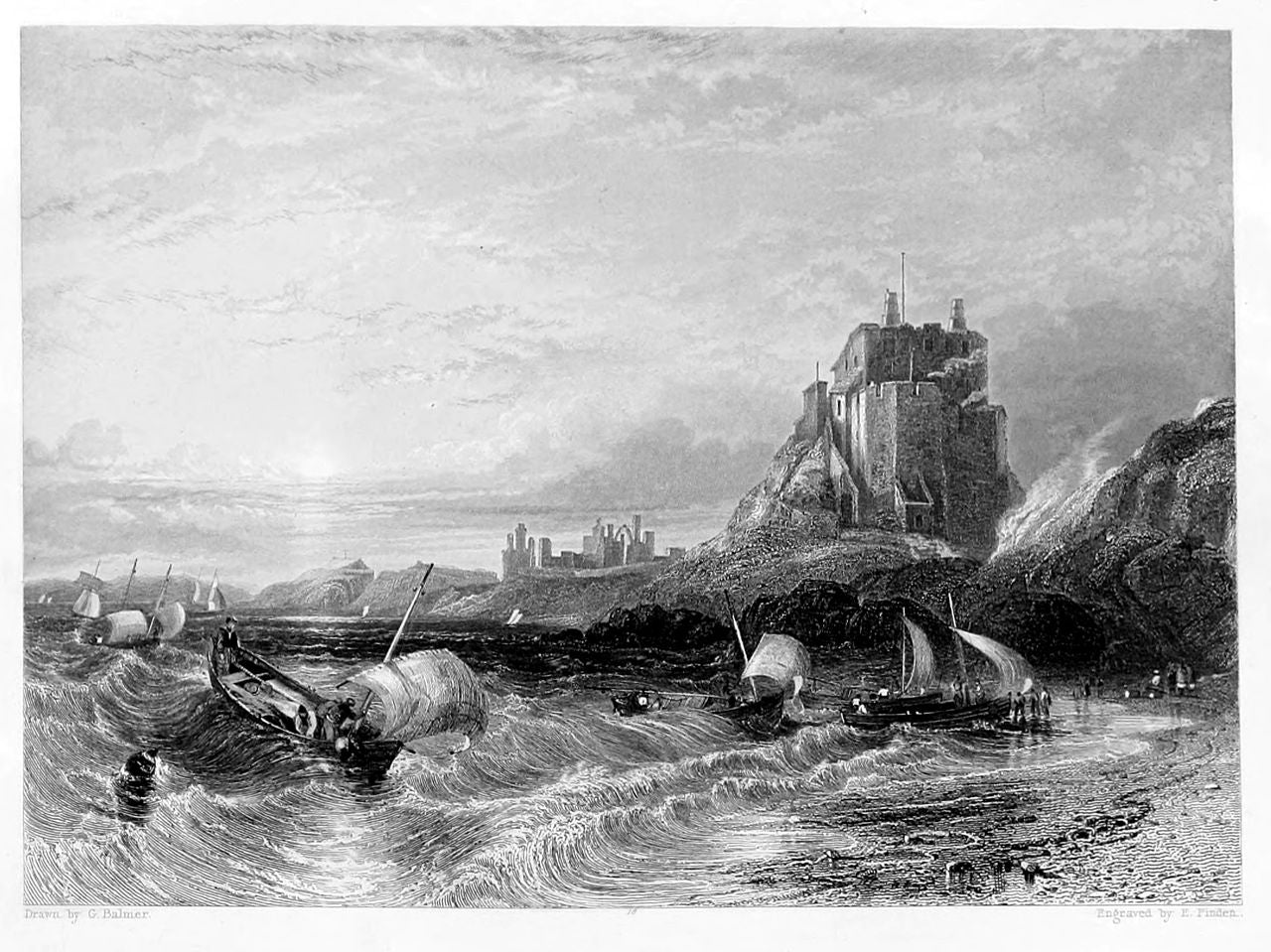George Balmer (1805-1846) was an English painter of landscapes and marine scenes with a fondness for the North East. His lively views along the Northumberland coast are particularly noteworthy and rendered with finesse.
Early Years
Born in North Shields, Balmer originally trained as a house painter and was destined to follow in his father’s footsteps. Decorative painting was a respectable craft and he learned from one of the finest - Thomas Coulson in Edinburgh. During his time with Coulson, he met several other trainees, including John Wilson Ewbank (c.1779-1847), who were hopeful of pursuing artistic careers. Ewbank became a close friend and encouraged the young Balmer to abandon house painting in favour of the fine arts.
Upon returning to North Shields, he worked emphatically to hone his artistic prowess and achieved his first taste of success in 1826 when exhibiting ‘View of North Shields’ via the Northumberland Institution for the Promotion of the Fine Arts. It was here that he met fellow artist John Wykeham Archer (1808-1864), who hailed from Newcastle, and the two became lifelong friends.
Balmer’s initial exhibitions were followed by the co-production of an impressive work which now hangs at Trinity House, Newcastle. Titled ‘The Heroic Exploit of Admiral Collingwood at the Battle of Trafalgar', it was received well, as John Wykeham Archer explains.
“The honourable rivalry and friendly intimacy which existed between George Balmer and J. W. Carmichael induced these two painters to unite their efforts in one great work, the subject of which was ‘The Heroic Exploit of Admiral Collingwood at the Battle of Trafalgar,' a well-chosen subject, and one which came with an especial grace from the hands of the two men, who, themselves an honour to their native county, have thus honoured its renowned hero."
Travels
The rolling waves and rugged scenery of the coastline close to home was Balmer's natural habitat. As a boy, he’d spent countless hours adventuring on shingle beaches and enjoying tales of the sea regaled by his uncle.
However, with his career blossoming, he realised that to develop further, he needed to set sail for the continent. A decision that the local lad would’ve found exhilarating yet mildly disquieting in equal measure. Part of his journey involved studying the old masters at the Louvre.
“He visited several parts of Holland, and then proceeded up the Rhine, and traversed Switzerland, when, having made some valuable studies among the Alps, he turned a longing eye towards Italy, but hesitated and postponed that enterprise to a period which never came. He then set off for Paris in order to study the masterpieces in the Louvre Gallery. In Paris Balmer remained several months, observing much, and copying from Cuyp, Claude Lorraine, Paul Potter, and Ruysdael.”
London
Upon his return, much to the satisfaction of his friend Archer, Balmer moved to London.
“During this period I had ample occasion for admiring his zeal for art, and the assiduity with which he toiled to do justice to the opportunities he had enjoyed, and to embody the result of his travels in such a shape as would bring him honourably before the public in the London exhibitions.”
“At this time he found a kind patron in Mr. Harrison, an opulent merchant and accomplished gentleman of Liverpool. This gentleman, whom he had met abroad, enabled him, by his purchases and recommendation, to pursue his object steadily and without those pecuniary misgivings which oppress while they cruelly goad the artist who would earn an honourable fame, but who, being mortal, must provide withal for the baker and the fashioner of raiment.”
With his sketchbook brimming with continental views, Balmer produced numerous works during his time in the city. However, despite his growing popularity, he often pined for the scenic Northumberland coast.
“My old friend was never so much in his element as when painting a stranded ship, an old lighthouse, or the rippling of the waves on a shingly coast. He was much under the influence of early associations, and such were the objects to which he had been accustomed from childhood. An old mill was likewise a favourite subject of his pencil; and this was but another reminiscence of early days, when he ofttimes sojourned with his uncle, the miller at Plessy, near Blyth.”

George Balmer, Marsden Rock (c.1840)
In 1836, seeking a reliable commercial arrangement, Balmer undertook an ambitious project to document 'The Ports and Harbours of Great Britain’ for William Finden. However, for reasons that are unclear, this was never completed. Some reports refer to him being struck by illness but Archer doesn’t mention it. Shortly after, he retired from painting due to a change in circumstances but continued to aid the development of younger artists.

William Finden After George Balmer, Holy Island Castle and Lindisfarne Abbey (1840)
Early Retirement
“About this time my friend found himself in circumstances which made him independent of his profession; and a diffidence with regard to the merit of his own productions caused him to give up several commissions; and thenceforth, to the regret of many who admired his talent and worth, he abated his efforts, painting only a slight bit from time to time to keep his hand in, or as gifts to his friends."
“But his interest in art did not diminish with his own exertions; and the knowledge which he had acquired was imparted to his friends in kind and manly advice, judicious help, or words of encouragement, which were the more prized for their sincerity; for he never flattered nor compromised his integrity by an unmeaning comment upon any work of art which might be shown to him.”
In his final few years, Balmer returned to Tyneside where he lived a relatively reclusive lifestyle. His friends rarely saw him, despite their best endeavours. He died in Ravensworth in 1846 and was buried in Jesmond Cemetery.
Today, when we cast our eye across Balmer’s remaining oeuvre, his love for the North East coast is palpable. With careful handling, he produced an accomplished array of vivid works to celebrate an area he cherished. His humility stifled his commercial success and, in many ways, he was an artist in the truest sense of the word.
His works are held in various public collections including at the British Museum, V&A, Tyne & Wear Museums, Lady Lever Art Gallery, and the Städel Museum Frankfurt.
1805
Born in North Shields, Northumberland, England, the son of a house painter.
Studied alongside John Wilson Ewbank (c.1779-1847).
1826
Began exhibiting in Newcastle with ‘View at North Shields’
1829
Became a lifelong friend of the artist John Wykeham Archer (1808-1864).
1831
Exhibited watercolours in Newcastle.
C. 1832
Travelled to Holland, the Rhine, Switzerland and Paris.
1836
Worked for William Finden on ‘The Ports and Harbours of England’.
1846
Died in Ravensworth, Durham, England.

